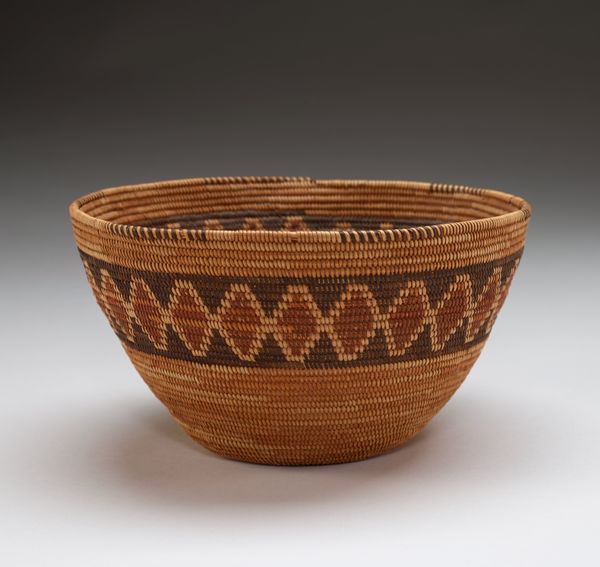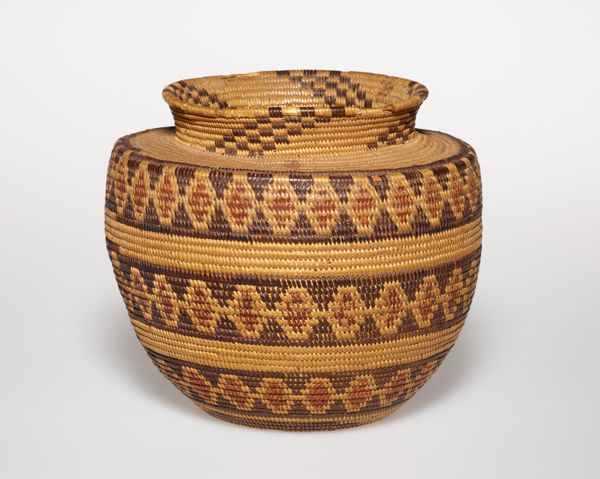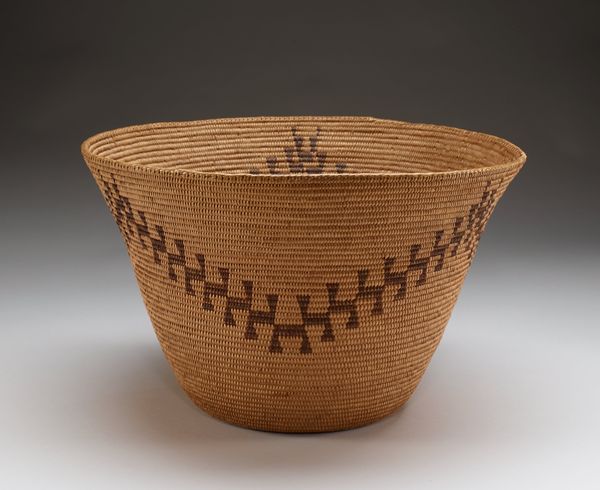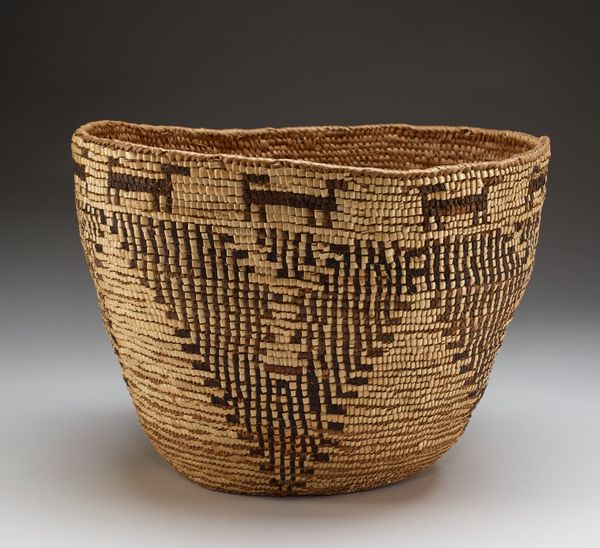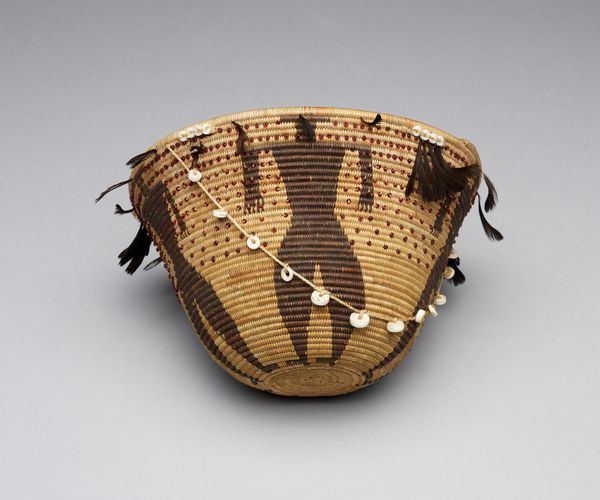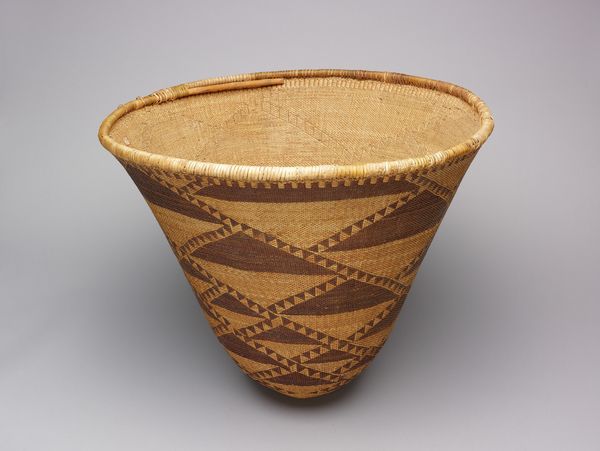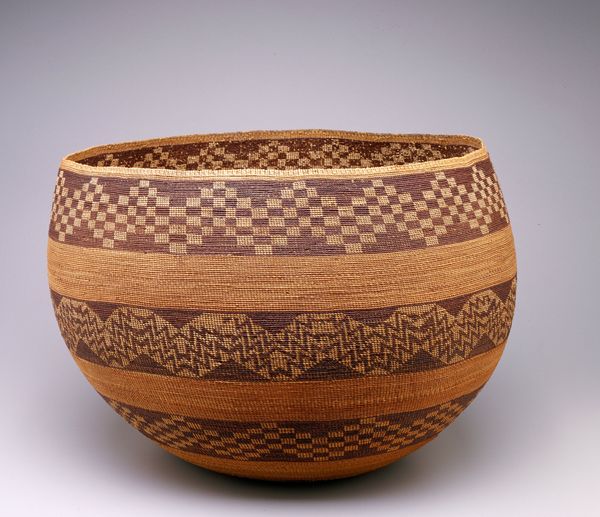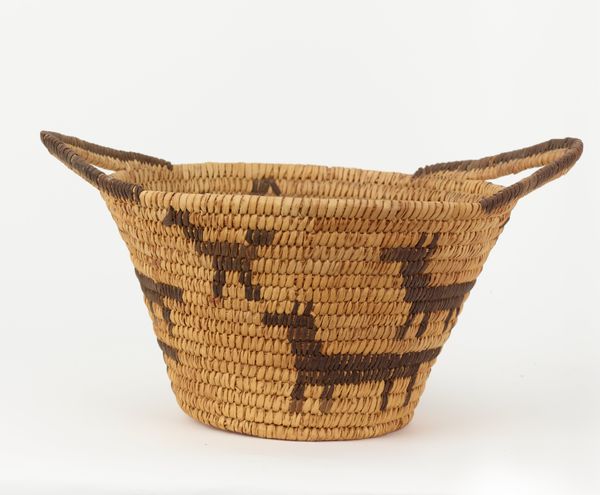
fibre-art, weaving, textile
#
fibre-art
#
pottery
#
weaving
#
textile
#
stoneware
#
geometric
#
earthenware
#
decorative-art
#
indigenous-americas
Dimensions: 4 7/8 × 9 13/16 × 9 13/16 in. (12.38 × 24.92 × 24.92 cm)
Copyright: Public Domain
Editor: Here we have a lidded basket, made around 1900 by the Tübatulabal people. The weaving is so intricate! There's a tactile quality about the zig-zag pattern and those soft-looking feathers that circle the lid. How do you read the symbolism in this particular piece? Curator: This basket transcends mere utility; it’s a repository of cultural memory. Note how the geometric patterns, the zig-zags, echo the landscape of the American Southwest—the mountains, the lightning. Editor: Interesting! So, it's a visual shorthand for their environment? Curator: Precisely. These aren't just decorations, they are signifiers of place and identity. The feathers, too, speak of a connection to the natural world, possibly carrying spiritual weight, representing birds, flight, or freedom. We can almost feel the continuity between the makers and their ancestors as if time is folded into this object. What do you think of the repeated geometric designs in relation to Indigenous art? Editor: I'm noticing how they’re abstract, but they also could be interpreted as representational of natural elements. They appear both simple and extremely complicated. The weaving technique itself must require great skill and repetition too, perhaps suggesting ritual and meaning. Curator: It is tempting to find universally shared themes of art-making practices such as skill, craft, labour, identity. We can recognize this basket as a visual embodiment of interconnectedness of material life, environment and belief. Do you see the cultural value of preserving such artifacts? Editor: Absolutely. Seeing something so beautifully made and loaded with meaning truly does allow us to connect with the past and with a culture distinct from our own. Thank you! Curator: A pleasure. Considering this artwork, I've noticed a refined appreciation of visual language rooted in the environment that gives me inspiration in my own art practice.
Comments
minneapolisinstituteofart almost 2 years ago
⋮
This basket, made in the early 20th century by an Indigenous woman artist in California, incorporates locally harvested materials including grasses and roots, gathered through a deeply complex understanding of the local ecology. Harvesting is just the beginning of a long process of the preparation of materials that must happen before each artist can sit down to weave.
Join the conversation
Join millions of artists and users on Artera today and experience the ultimate creative platform.

